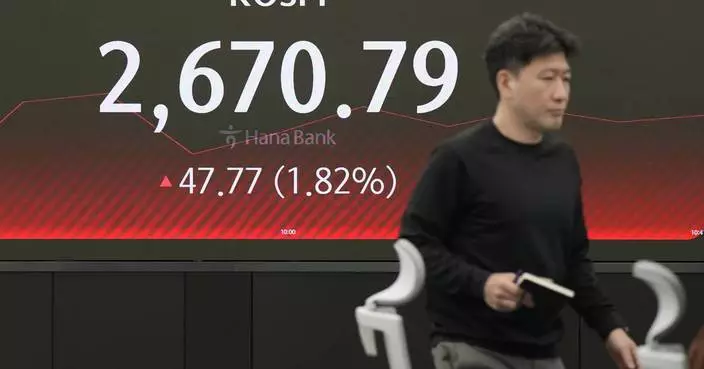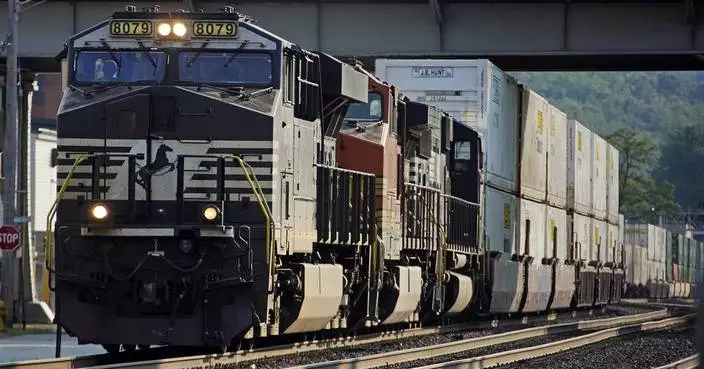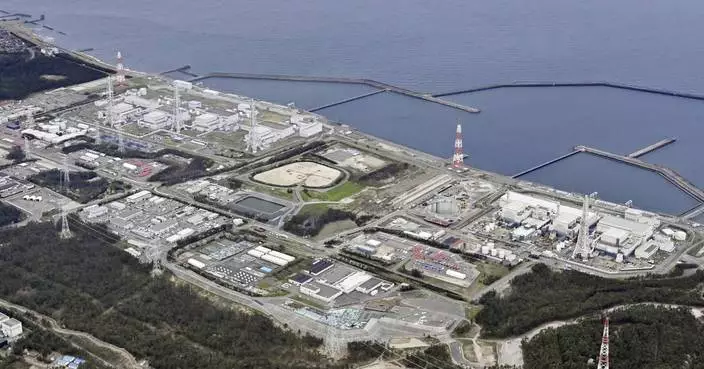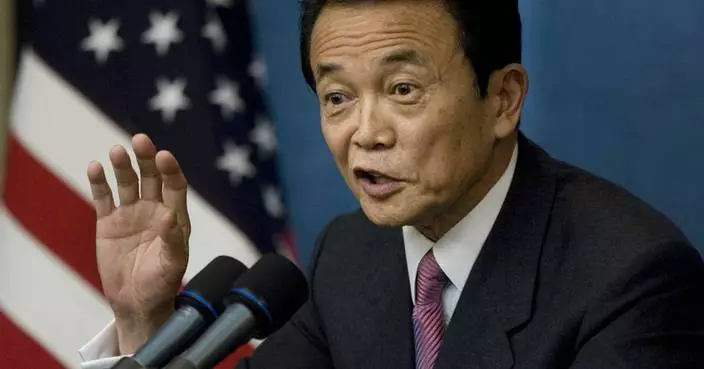North Korea's state-run media have toned down their rhetorical attacks on the United States and South Korea while leader Kim Jong Un pursues a more diplomatic approach, but the vitriol continues — and Japan is now Pyongyang's favorite foil.
Commentaries critical of Tokyo, which has maintained a harder line toward Pyongyang than Seoul and Washington, have increased noticeably in recent weeks in a strategy aimed at driving a wedge between Japan and its allies.
Click to Gallery
North Korea's state-run media have toned down their rhetorical attacks on the United States and South Korea while leader Kim Jong Un pursues a more diplomatic approach, but the vitriol continues — and Japan is now Pyongyang's favorite foil.
Pyongyang has also lambasted Japanese Foreign Minister Taro Kono for suggesting Japan could foot part of the bill for inspections to verify the North's denuclearization process.
In a typical commentary late last week, the North Korean ruling party's daily newspaper, Rodong Sinmun, called Japan "impotent" in the political and diplomatic arena and said Kono was a "political charlatan."
But while Prime Minister Shinzo Abe is also reportedly considering a one-on-one meeting with Kim, he has held surprisingly firm to a tough policy of maintaining economic and political pressure on the North. The Japanese leader could meet Kim at an eastern Russia development forum in Vladivostok in September, where Kim and Putin may hold their summit.
Public sentiment in Japan toward North Korea is generally negative. The North already has ballistic missiles that could be used to launch a conventional, biological or nuclear attack on Tokyo or other major cities, along with U.S. military bases throughout Japan where tens of thousands of American troops are deployed. Kim unilaterally announced a moratorium on long-range missile launches, pleasing Trump, but has pointedly said nothing about the mid-range missiles that concern Japan the most.
Over the past few days, the North's official media have chastised Japan for discriminating against its large ethnic Korean community and played up South Korean reports that protesters in Seoul threw eggs at the Japanese Embassy over Tokyo's alleged attempts to take control over a disputed island that is a cause celebre for both North and South.
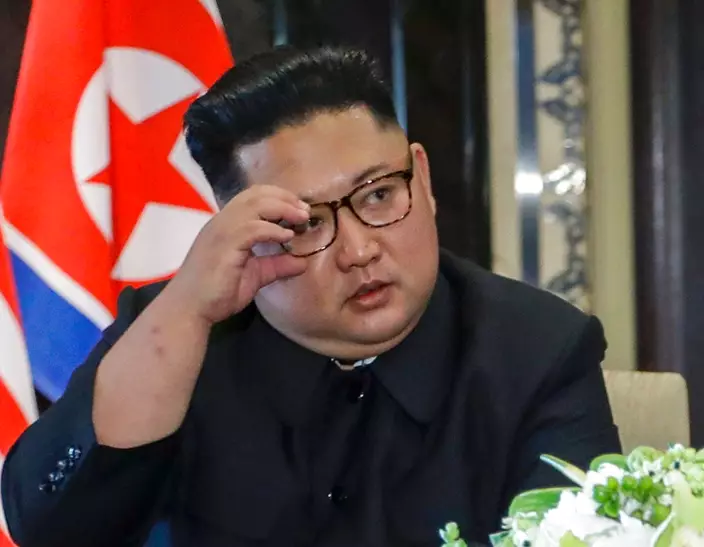
FILE - In this June 12, 2018, file photo, North Korea leader Kim Jong Un adjust his glasses after signing documents with U.S. President Donald Trump at the Capella resort on Sentosa Island in Singapore. North Korea’s state-run media have toned down their rhetorical attacks on the United States and South Korea while leader Kim Jong Un pursues a more diplomatic approach, but the vitriol continues, and Japan is now Pyongyang’s favorite foil. (AP Photo/Evan Vucci, File)
Pyongyang has also lambasted Japanese Foreign Minister Taro Kono for suggesting Japan could foot part of the bill for inspections to verify the North's denuclearization process.
Japan ruled the Korean Peninsula as a colony from 1910 to 1945 and the history of animosity between the neighbors goes back centuries. Tokyo and Pyongyang have never had formal diplomatic ties.
But North Korea's strategy of deliberately keeping Tokyo at arm's length has been particularly apparent over the past several months, as Kim has held summits with China, South Korea, and the United States. He is expected to hold a summit with Russian President Vladimir Putin in September.
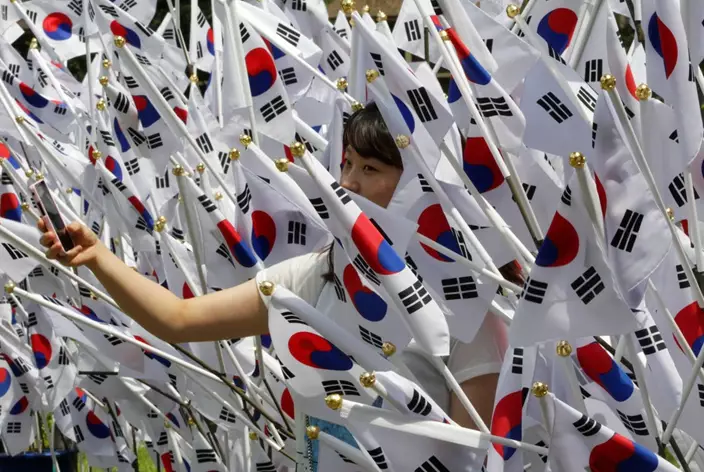
FILE - In this Aug. 14, 2102, file photo, a woman snaps picture of herself with national flags displayed ahead of a celebration day of Korea's liberation from Japan's colonial rule, in front of Songpa-Gu Office or an old capitol of Korea in Seoul, South Korea. North Korea’s state-run media have toned down their rhetorical attacks on the United States and South Korea while leader Kim Jong Un pursues a more diplomatic approach, but the vitriol continues, and Japan is now Pyongyang’s favorite foil. Japan ruled the Korean Peninsula as a colony from 1910-45 and the history of animosity between the neighbors goes back centuries. (AP Photo/Ahn Young-joon, File)
In a typical commentary late last week, the North Korean ruling party's daily newspaper, Rodong Sinmun, called Japan "impotent" in the political and diplomatic arena and said Kono was a "political charlatan."
"Japan is near to the Korean Peninsula. But Japan is a burglar that historically inflicted wars and misfortune and pain of colonial rule on Korea," it said before getting to North Korea's often repeated demand: "Japan should make a sincere apology and reparation for the past crimes."
Because it is state-run, North Korea's media offer a good barometer of Pyongyang's political climate. Since earlier this year, they have significantly cut back on negative commentaries directed at U.S. President Donald Trump and South Korean President Moon Jae-in, presumably to avoid souring the North's ongoing diplomatic outreach toward both countries.
It has, however, reserved the right to lash out at some of their negotiators or policies without slamming the leaders themselves.
Pyongyang's game of hardball with Tokyo is calculated to play well in China and South Korea, which also harbor deep distrust toward Japan. Tokyo has clearly been relegated to a secondary role in the talks to persuade Kim to abandon his nuclear arsenal and bring his country more into the norms of the international community.
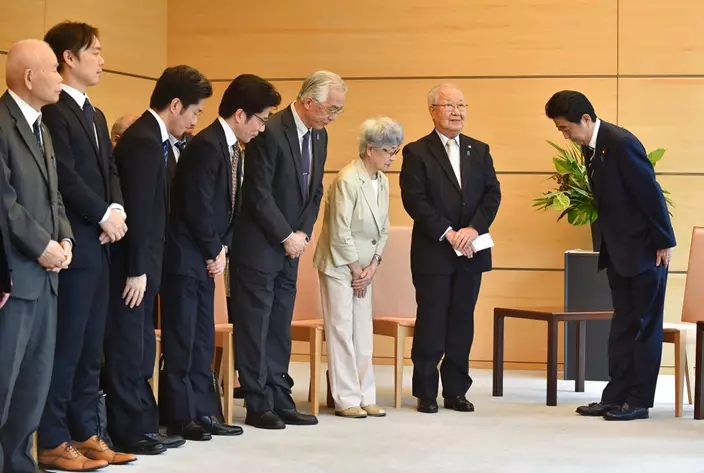
FILE - In this June 14, 2018, file photo, Japanese Prime Minister Shinzo Abe, right, bows to Shigeo Iizuka, second from right, leader of a group of families of Japanese abducted by North Korea, and Sakie Yokota, third from right, mother of Megumi Yokota, one of the Japanese abductees, and other members during a meeting at his official residence in Tokyo. Tokyo claims North Korea has not been fully transparent about the fate of the abductees and whether any are still alive. (Kazuhiro Nogi/Pool Photo via AP, File)
But while Prime Minister Shinzo Abe is also reportedly considering a one-on-one meeting with Kim, he has held surprisingly firm to a tough policy of maintaining economic and political pressure on the North. The Japanese leader could meet Kim at an eastern Russia development forum in Vladivostok in September, where Kim and Putin may hold their summit.
Abe's position is extremely delicate.
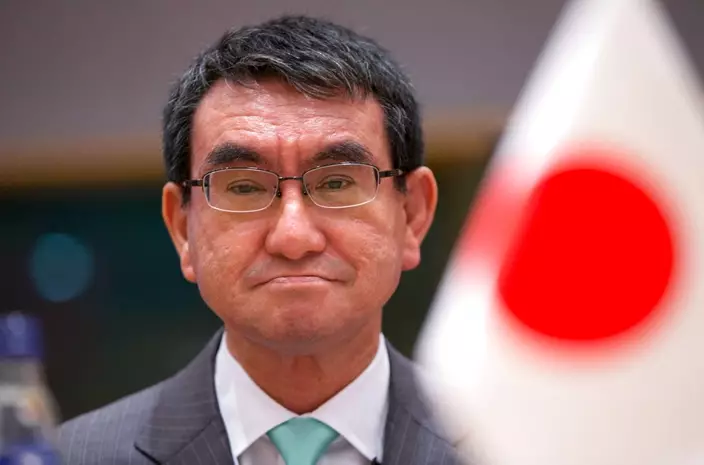
FILE - In this April 25, 2018, file photo, Japan's Foreign Minister Taro Kono waits for the start of a conference "Supporting the future of Syria and the region" at the Europa building in Brussels. North Korea’s state-run media have toned down their rhetorical attacks on the United States and South Korea while leader Kim Jong Un pursues a more diplomatic approach, but the vitriol continues, and Japan is now Pyongyang’s favorite foil. Pyongyang has lambasted Kono for suggesting Japan could foot part of the bill for inspections to verify the North’s denuclearization process. (AP Photo/Virginia Mayo, File)
Public sentiment in Japan toward North Korea is generally negative. The North already has ballistic missiles that could be used to launch a conventional, biological or nuclear attack on Tokyo or other major cities, along with U.S. military bases throughout Japan where tens of thousands of American troops are deployed. Kim unilaterally announced a moratorium on long-range missile launches, pleasing Trump, but has pointedly said nothing about the mid-range missiles that concern Japan the most.
Abe is also committed to resolving a bitter dispute over more than a dozen Japanese citizens who were abducted by North Korean agents in the 1970s and '80s. Pyongyang insists that issue has been resolved.
Tokyo claims the North has not been fully transparent about the fate of the abductees and whether any are still alive.
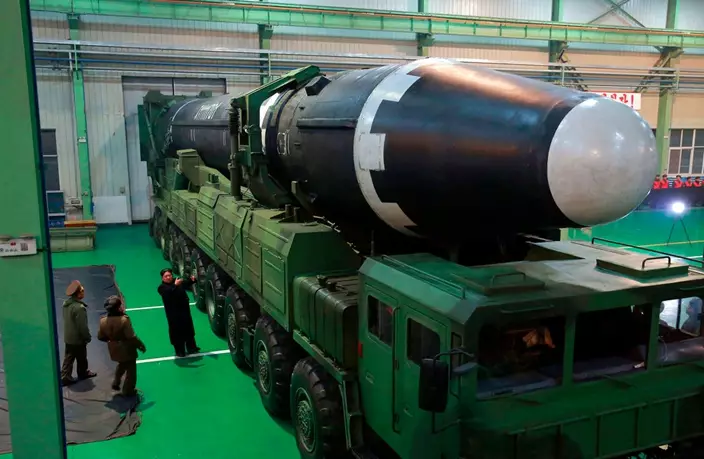
FILE - This Nov. 29, 2017, file photo provided by the North Korean government shows North Korean leader Kim Jong Un, third from left, and what the North Korean government calls the Hwasong-15 intercontinental ballistic missile, in North Korea. Public sentiment in Japan toward North Korea is generally negative. The North already has ballistic missiles that could be used to launch a conventional, biological or nuclear attack on Tokyo or other major cities, along with U.S. military bases throughout Japan where tens of thousands of American troops are deployed. (Korean Central News Agency/Korea News Service via AP, File)
The biggest hurdle, however, could well be the reparations issue, which some experts believe could cost Japan billions of dollars.
North Korea has long demanded that Japan pay for the damage it caused during its often brutal colonial rule. Although Japan claims that matter was settled long ago, the shifting ties between Pyongyang, Seoul, and Washington — and particularly efforts to formally declare an end to the 1950-53 Korean War — could put Tokyo under increased pressure to re-examine its own pastor be left out in the cold.
TOKYO (AP) — Spicy, steaming, slurpy ramen might be everyone’s favorite Japanese food.
In Tokyo, long lines circle around blocks, and waiting an hour for your ramen is normal. What awaits might be just a dive, but a hot bowl of ramen rarely fails to hit the spot.
Often cooked right before your eyes behind dingy counters, the noodle dish starts here at around 1,000 yen ($6.50), and comes in various flavors and local versions. There's salty, soy-based “shoyu” or “miso” paste. Perhaps it's red-hot spicy with a dash of chili. Sometimes there's no soup at all but a sauce to dip the noodles in.
The curly noodles are lighter than the darker buckwheat “soba,” or “udon,” which are also usually flatter or thicker.
Ramen has also surged in popularity in the U.S., South Korea and other countries. Retail sales in the United States have risen 72% since 2000, according to NielsenIQ, a sales tracker. In the 52 weeks ending April 13, Americans bought more than $1.6 billion worth of ramen.
In restaurants, versions beyond the traditional soup are appearing, said Technomic, a research and consulting company for the restaurant industry. Del Taco, a Mexican chain, recently introduced Shredded Beef Birria Ramen, for example.
Packaged ramen that's easily cooked in hot water at home is called instant noodles; it's precooked and then dried. The story of how Momofuku Ando invented instant ramen in a backyard shed in 1958, when food was still scarce, is the stuff of legend in Japan. He went on to found the food giant Nissin Foods.
Although convenient, instant noodles aren't the same as the ramen served at restaurants.
Some Japanese frequent ramen shops twice or three times a week. They emerge, dripping with sweat, smacking their lips.
“I’m probably a talking bowl of ramen,” says Frank Striegl as he leads a dozen American tourists through the back alleys of Tokyo’s funky Shibuya district on what he calls “the ultimate ramen experience.”
The crowd is led behind a shabby doorway, sometimes down narrow stairs, to a dim-lit table where ramen gets served in tiny bowls, practically the size of a latte cup, or about a quarter of a regular ramen bowl. That's so guests have enough room in their tummies to try out six different kinds of ramen, two at each spot during the tour.
One restaurant, Shinbusakiya, offers “Hokkaido classics” from the northernmost main island, while another, Nagi, offers “Fukuoka fusion,” from the southern main island of Kyushu. It includes a green ramen, similar to pasta al pesto. Syuuichi, which means “once a week,” features curry-flavored ramen.
“It’s not just, of course, about eating delicious ramen, but also learning about it,” said Striegl, a Filipino American who grew up in Tokyo. He calls ramen “people’s food.”
“A lot of countries around the world have their version of ramen in a way," he said. "So I think because of that, it’s a dish that’s easy to understand. It’s a dish that’s easy to get behind.”
While the tour participants were relishing their noodles, Striegl outlined a brief history of ramen: Its roots date back to the samurai era, when a shogun took a fancy to Chinese noodles, setting off the localizing journey for ramen that continues today.
Katie Sell, a graduate student on Striegl’s tour, called ramen "a kind of comfort food, especially in the winter. Get a group of friends, go have some ramen and just enjoy it.”
Kavi Patel, an engineer from New Jersey, said he was glad he included the humble ramen on his tour of Japan, along with more established attractions like the ancient capital of Kyoto and the deer park in Nara. “I’m having good fun,” he said.
While ramen has never been more popular in Japan, ramen places have struggled because of the pandemic, the weakening Japanese yen, and the higher cost of wheat imports and energy, according to a study by Tokyo Shoko Research.
One beneficiary of the pandemic is a home delivery service for frozen, professionally cooked ramen. Called takumen.com, it boasts some 500,000 subscribers in Japan.
Another Tokyo operation, Gourmet Innovation, has signed on 250 of the country's top ramen joints to sell packaged versions of their soup, noodles and toppings, to be heated up in boiling water and served at home.
Co-founder and executive Kenichi Nomaguchi, who hopes to expand his business overseas, says ramen and animation are Japan’s most successful exports.
Why ramen? Unlike pasta or curry, ramen is difficult to replicate at home, he said, Making it from scratch involves hours of cooking stock, with pork, beef or chicken, various fish or bonito flakes, and “kombu” kelp. Some stock uses oysters.
Besides the different soup stocks and flavors, onions, grated garlic, ginger or sesame oil can be added for extra punch. Toppings can include bean sprouts, barbecued pork, boiled or raw eggs, seaweed, fermented bamboo shoots called “menma,” chopped green onions, cooked cabbage, snow peas or corn.
Some insist a bowl of ramen is not complete without a slice of narutomaki, a whitefish cake with a pink spiral pattern.
Unusual varieties include coffee ramen and ramen topped with ice cream or pineapple.
Jiro-style ramen, named for a legendary restaurant in Tokyo, features mounds of vegetable toppings, huge steak-like barbecued pork and pungent, grated garlic seeped in a fatty pork-based stock.
“Impact is important. So the pork has to be big so it’s truly memorable,” said Kota Kobayashi, who serves Jiro-style ramen at his chain, “Ore No Ikiru Michi,” which translates to, “The way I live my life.”
Kobayashi is a former professional baseball player at the Yokohama Bay Stars, and played with the minor league Cleveland Guardians before switching to his ramen business.
“When I quit baseball, I chose ramen as my way of life,” he said with a smile.
He can wax philosophical about ramen. One cultural difference he has observed is that Americans tend to leave the noodles and drink all the soup, while the Japanese mostly do the opposite.
And taste is only part of what makes good ramen. One must also offer entertainment, Kobayashi said.
At his restaurants, the chopsticks are tucked in a box on a shelf, so first-time visitors ask where they are. Repeat customers go straight to that box. Kobayashi calls out, “Welcome back,” making the customers feel a connection, even if he doesn't remember a thing about them.
Dee-Ann Durbin contributed to this story from Detroit.
Yuri Kageyama is on X: https://twitter.com/yurikageyama
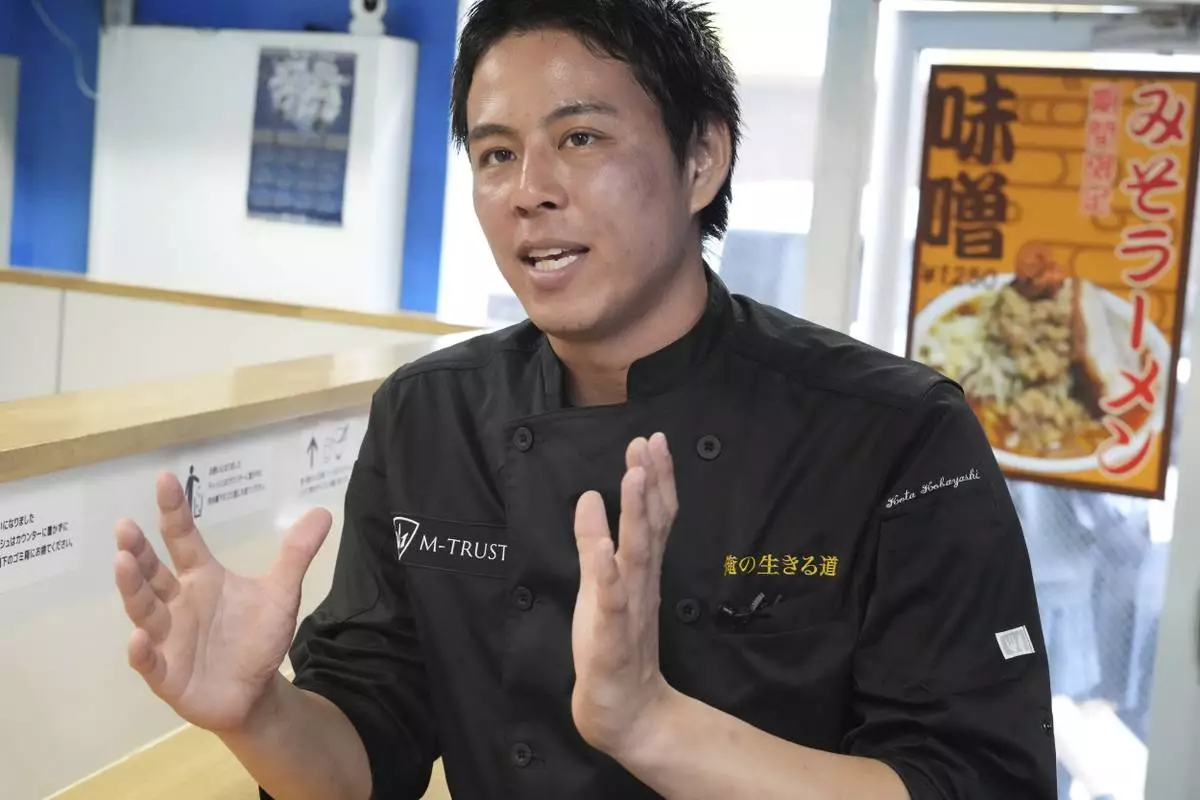
Kota Kobayashi, owner of a chain ramen shop called "Ore No Ikiru Michi," speaks during an interview with The Associated Press on April 17, 2024, in Tokyo. (AP Photo/Eugene Hoshiko)
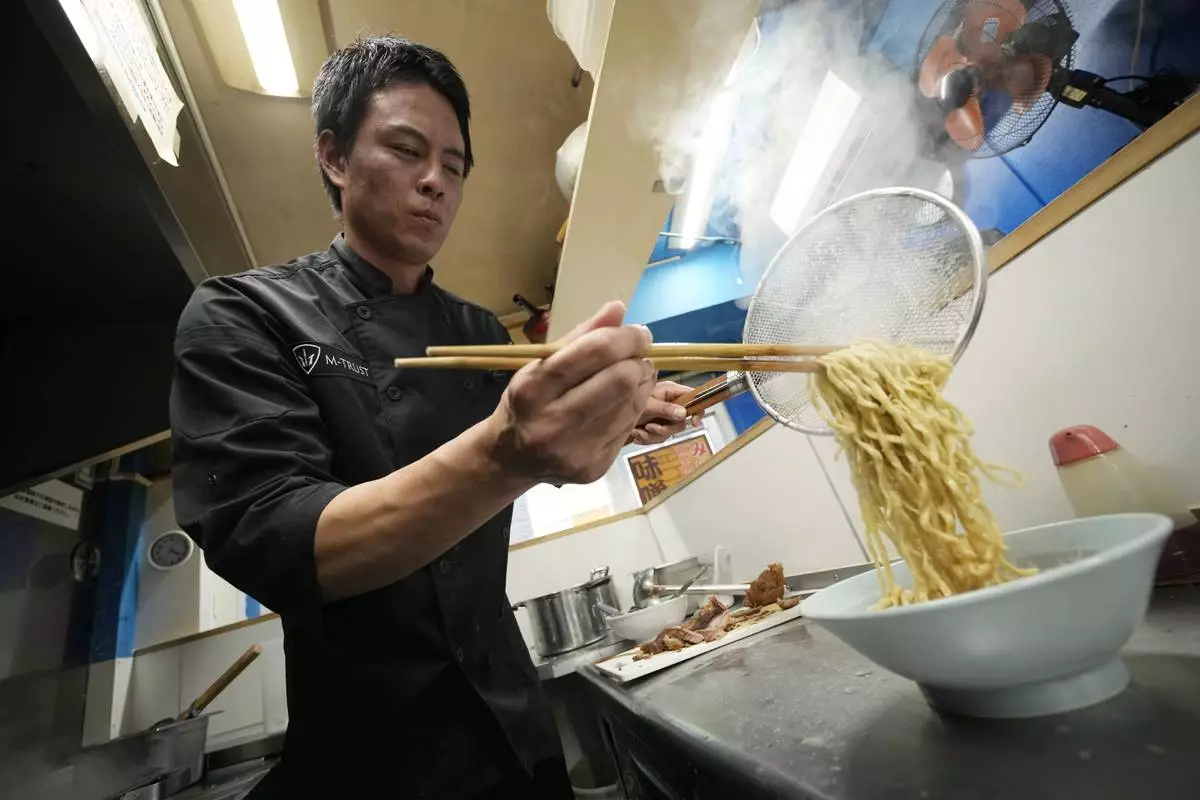
Kota Kobayashi prepares a bowl of noodle at his chain called "Ore No Ikiru Michi" in Tokyo on April 17, 2024. (AP Photo/Eugene Hoshiko)
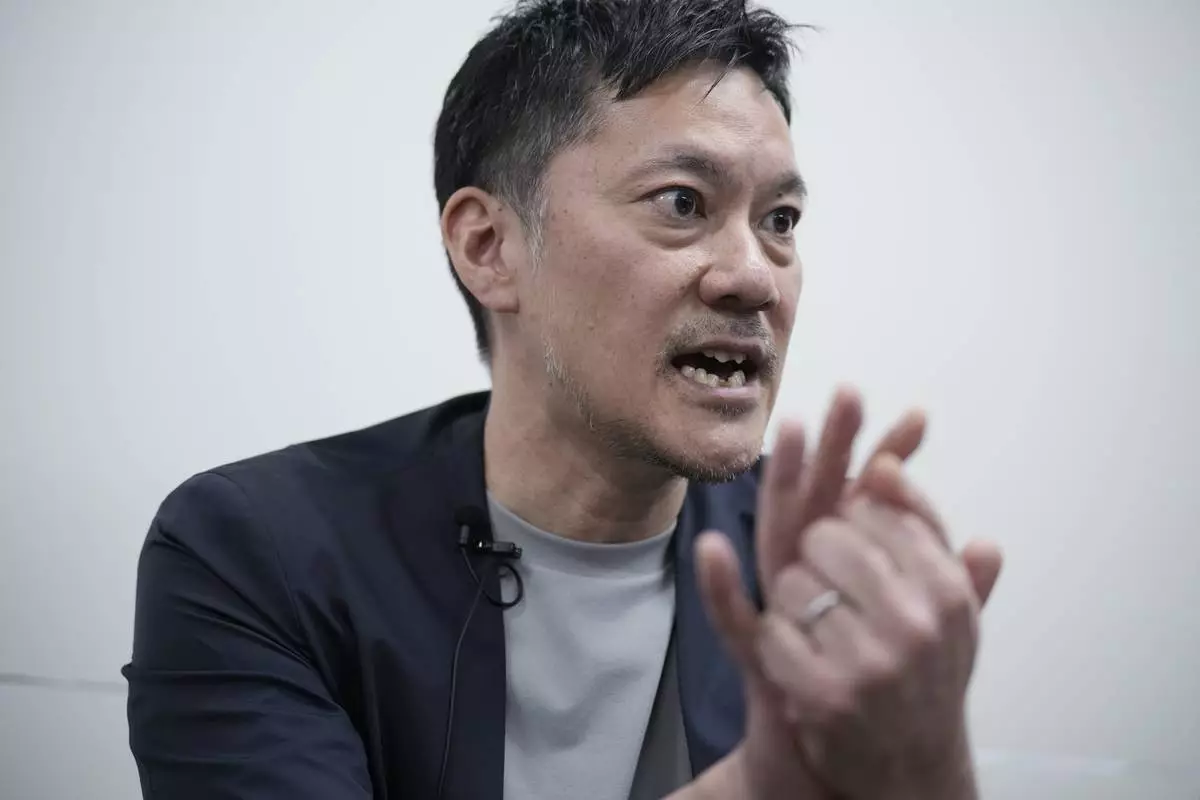
Co-founder and executive Kenichi Nomaguchi of Gourmet Innovation, speaks during an interview with The Associated Press in Tokyo, on April 10, 2024. Gourmet Innovation has signed on 250 of the country's top ramen joints to sell packaged versions of their soup, noodles and toppings, to be heated up in boiling water and served at home. (AP Photo/Eugene Hoshiko)
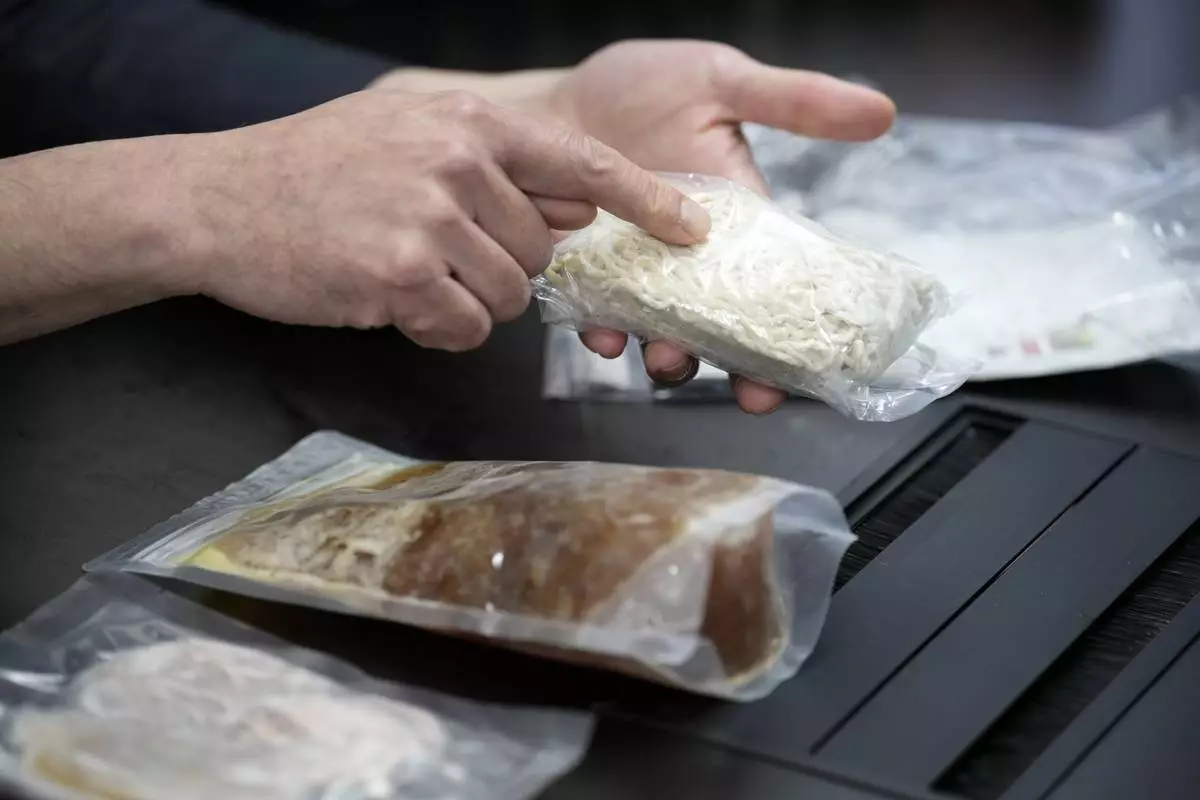
Co-founder and executive Kenichi Nomaguchi of Tokyo-based Gourmet Innovation, explains on the merchandise during an interview with The Associated Press, in Tokyo on April 10, 2024. Gourmet Innovation has signed on 250 of the country's top ramen joints to sell packaged versions of their soup, noodles and toppings, to be heated up in boiling water and served at home. (AP Photo/Eugene Hoshiko)
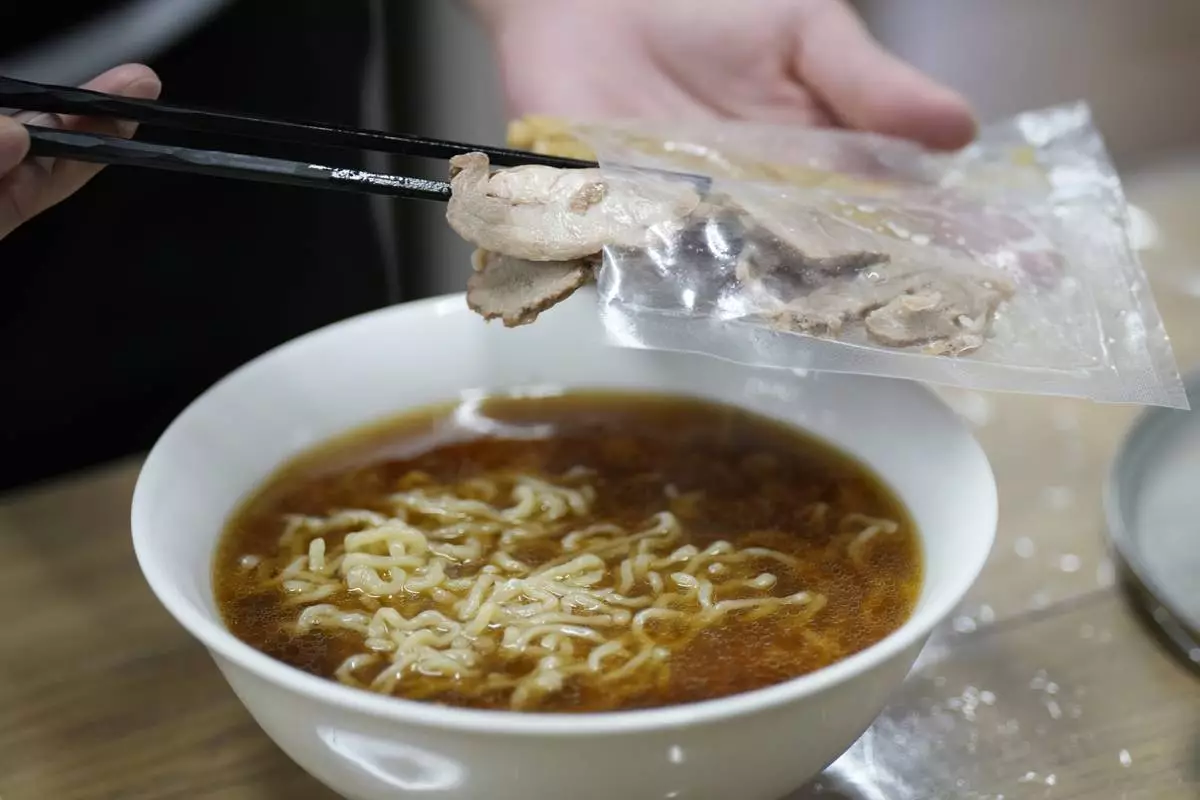
A staff member cooks one of their ramen merchandise sold online at Gourmet Innovation in Tokyo, on April 10, 2024. Gourmet Innovation has signed on 250 of the country's top ramen joints to sell packaged versions of their soup, noodles and toppings, to be heated up in boiling water and served at home. (AP Photo/Eugene Hoshiko)
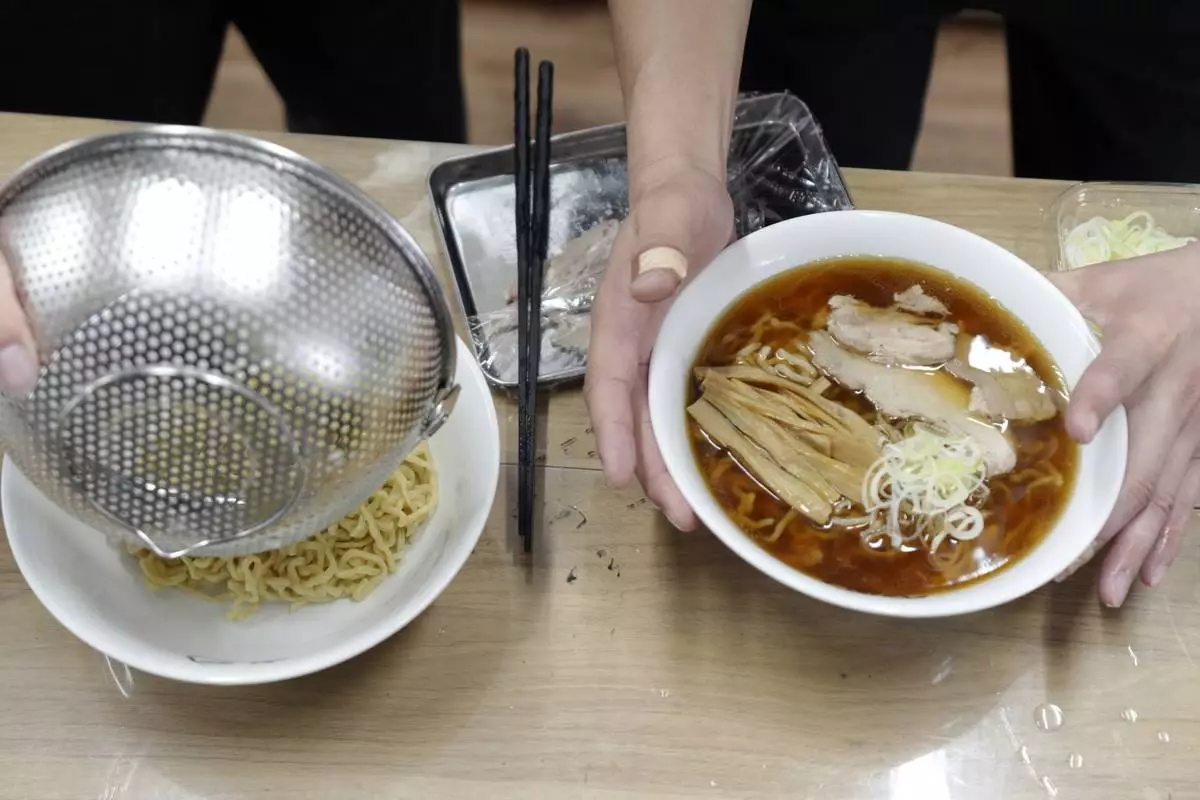
A staff member cooks one of their ramen merchandise sold online at Gourmet Innovation, in Tokyo Wednesday, April 10, 2024. Gourmet Innovation has signed on 250 of the country's top ramen joints to sell packaged versions of their soup, noodles and toppings, to be heated up in boiling water and served at home. (AP Photo/Eugene Hoshiko)
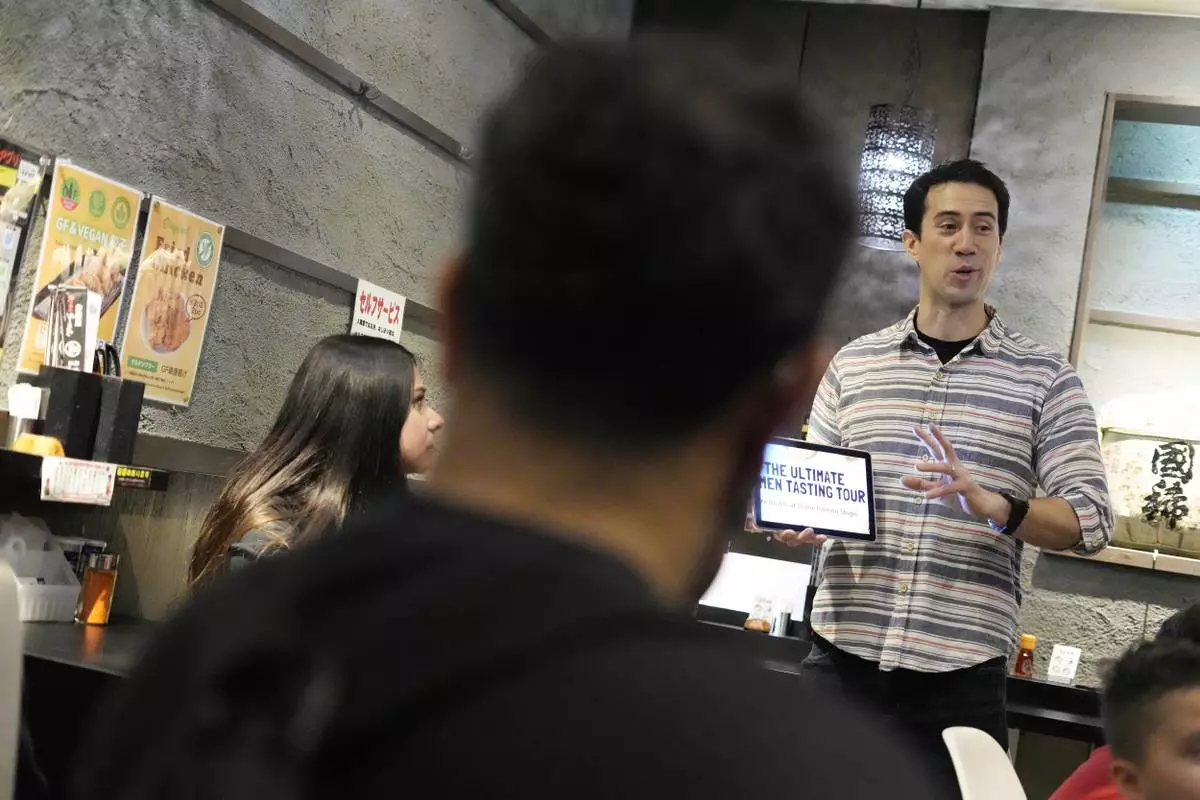
Frank Striegl, right, a guide of Tokyo Ramen Tours, explains foreign participants of a ramen tasting tour at Shinbusakiya, a ramen shop which offers "Hokkaido classics," at Shibuya district on April 2, 2024, in Tokyo. (AP Photo/Eugene Hoshiko)
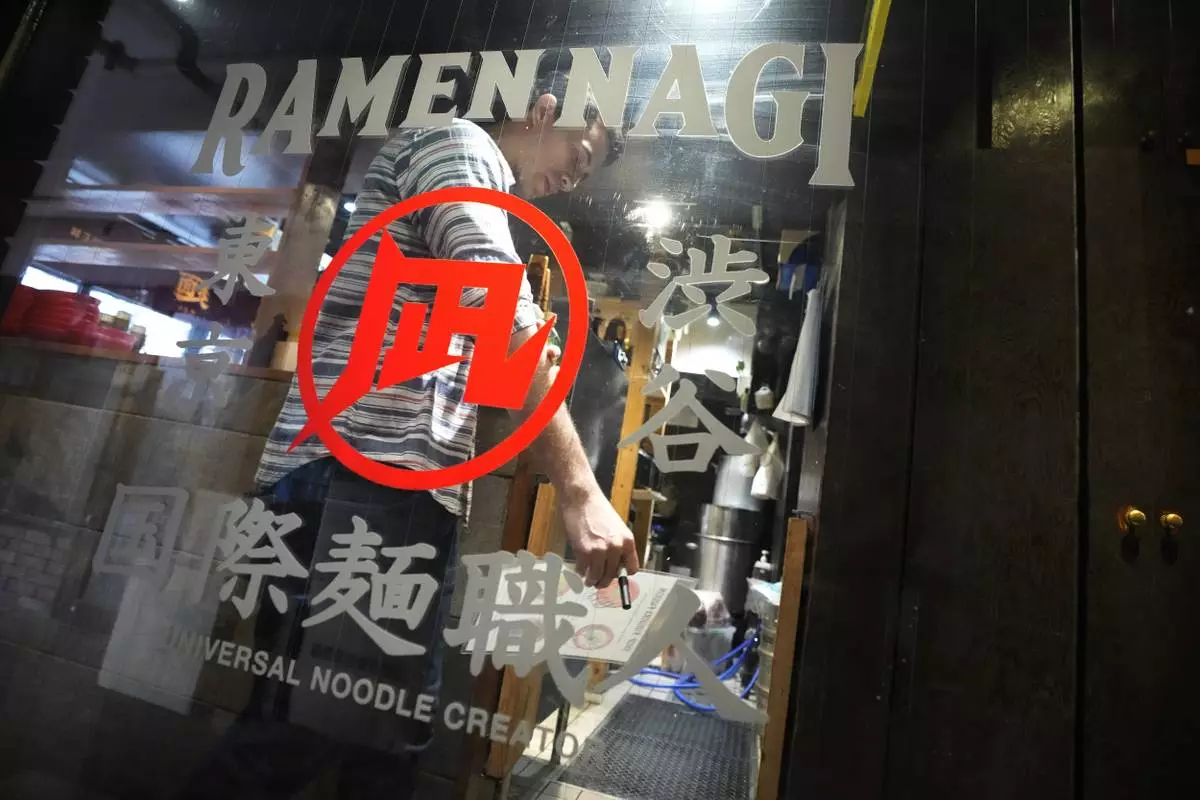
Frank Striegl, a guide of Tokyo Ramen Tours, walks inside Nagi, which offers "Fukuoka fusion," type ramen at Shibuya district on April 2, 2024, in Tokyo. (AP Photo/Eugene Hoshiko)
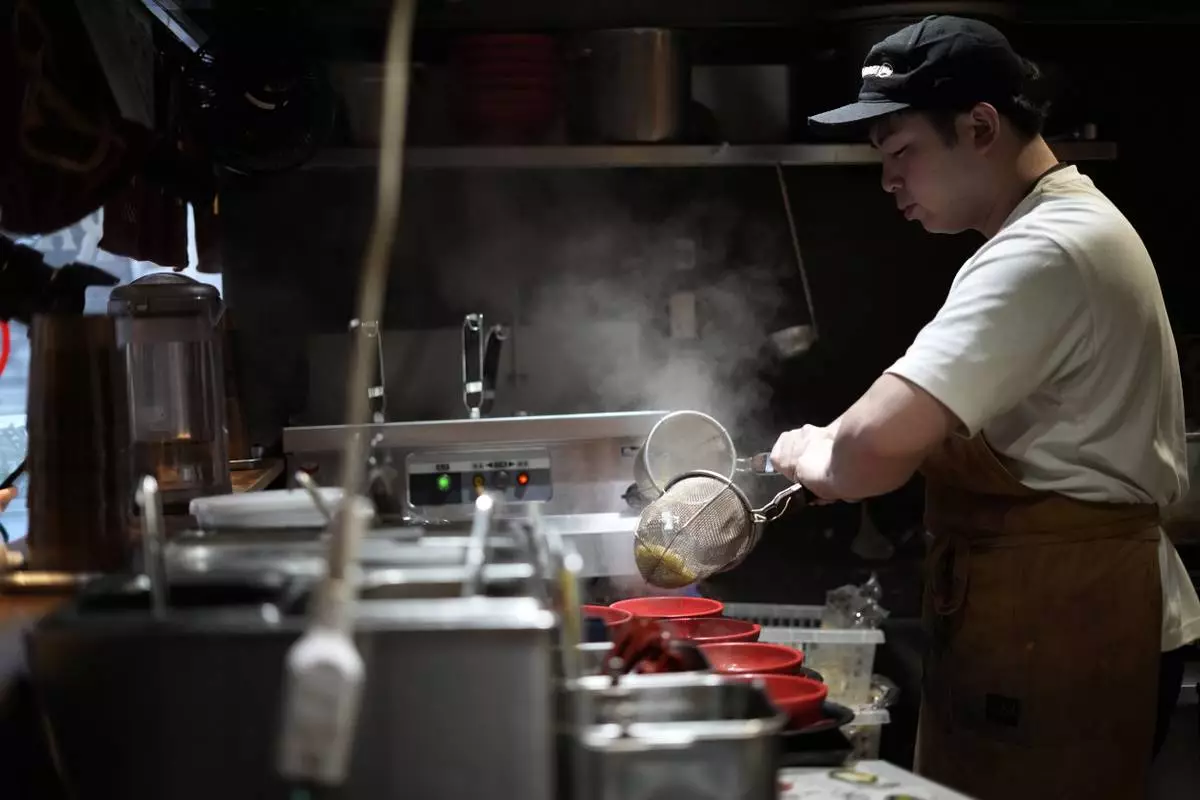
A chef cooks noodle for participants of Tokyo Ramen Tours at Nagi, which offers "Fukuoka fusion," type ramen at Shibuya district on April 2, 2024, in Tokyo. (AP Photo/Eugene Hoshiko)
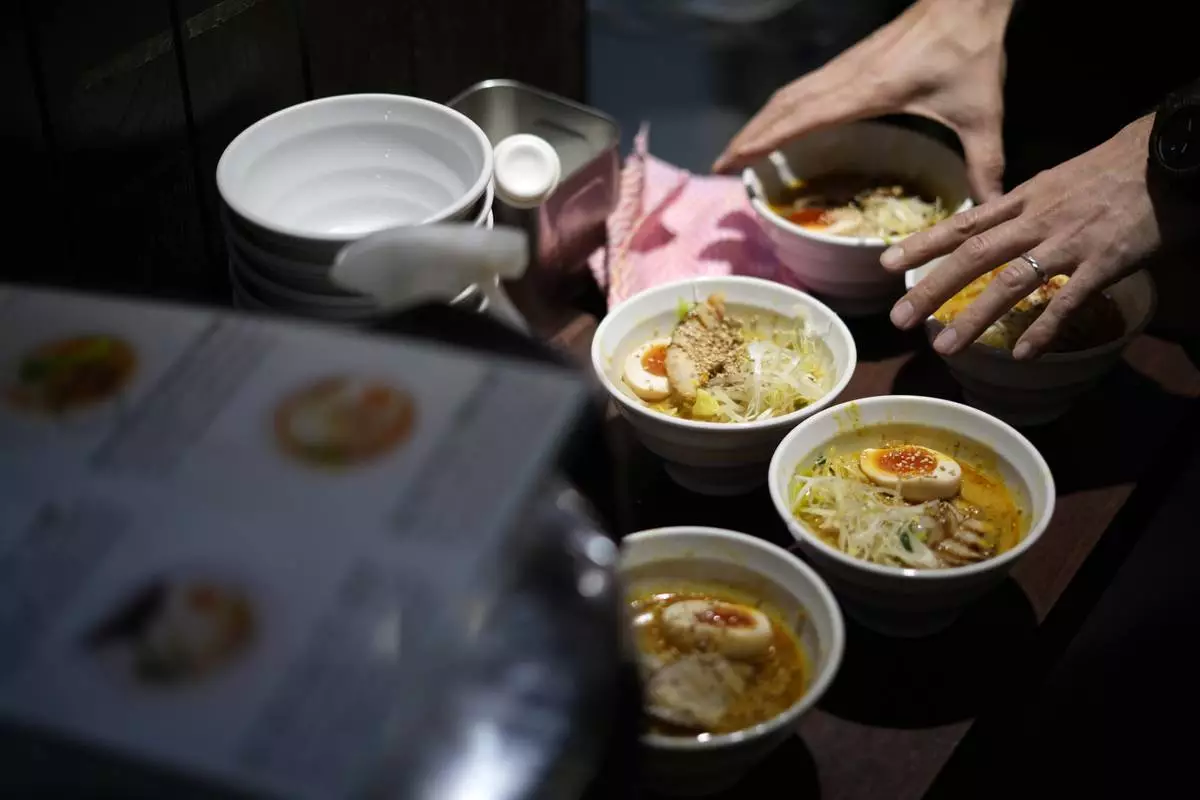
A staff member prepares to serve noodles for participants of Tokyo Ramen Tours at Syuuichi, which means "once a week," featuring curry-flavored ramen, at Shibuya district on April 2, 2024, in Tokyo. (AP Photo/Eugene Hoshiko)
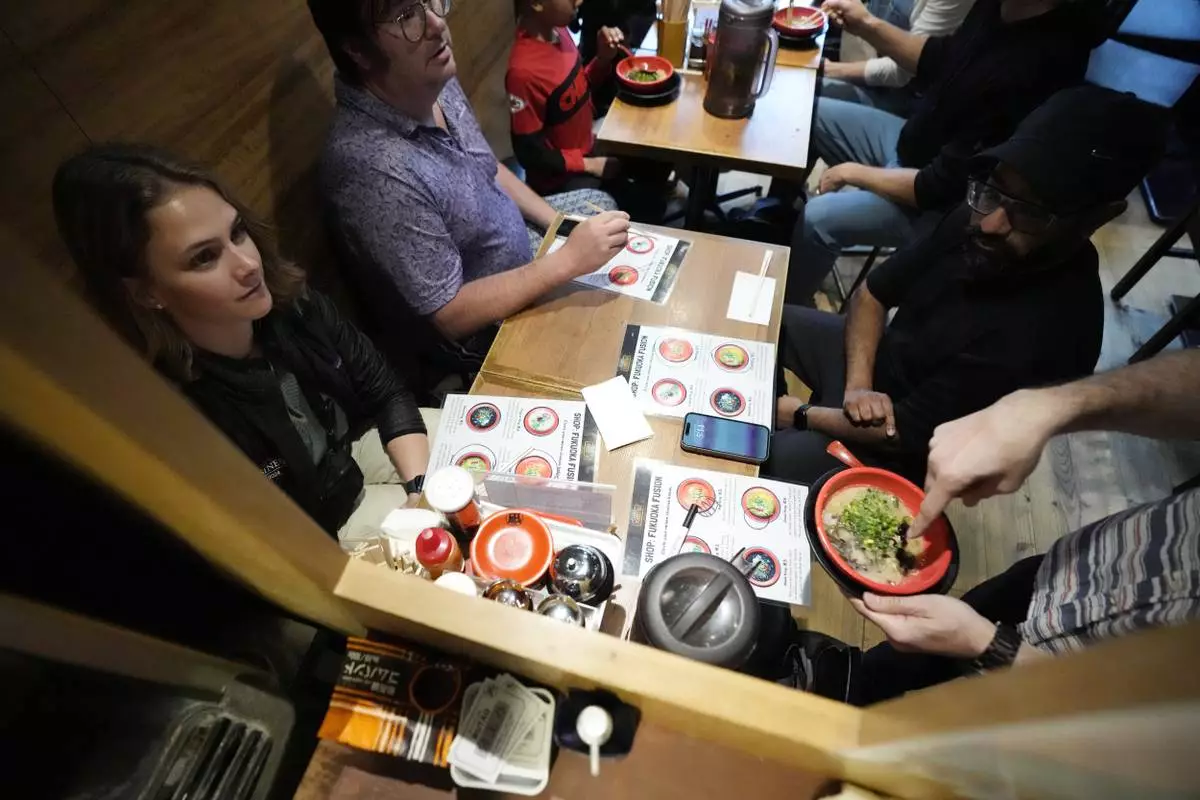
Frank Striegl, bottom right, a guide of Tokyo Ramen Tours, explains participants of a ramen tasting tour at Nagi, which offers "Fukuoka fusion," type ramen at Shibuya district on April 2, 2024, in Tokyo. (AP Photo/Eugene Hoshiko)
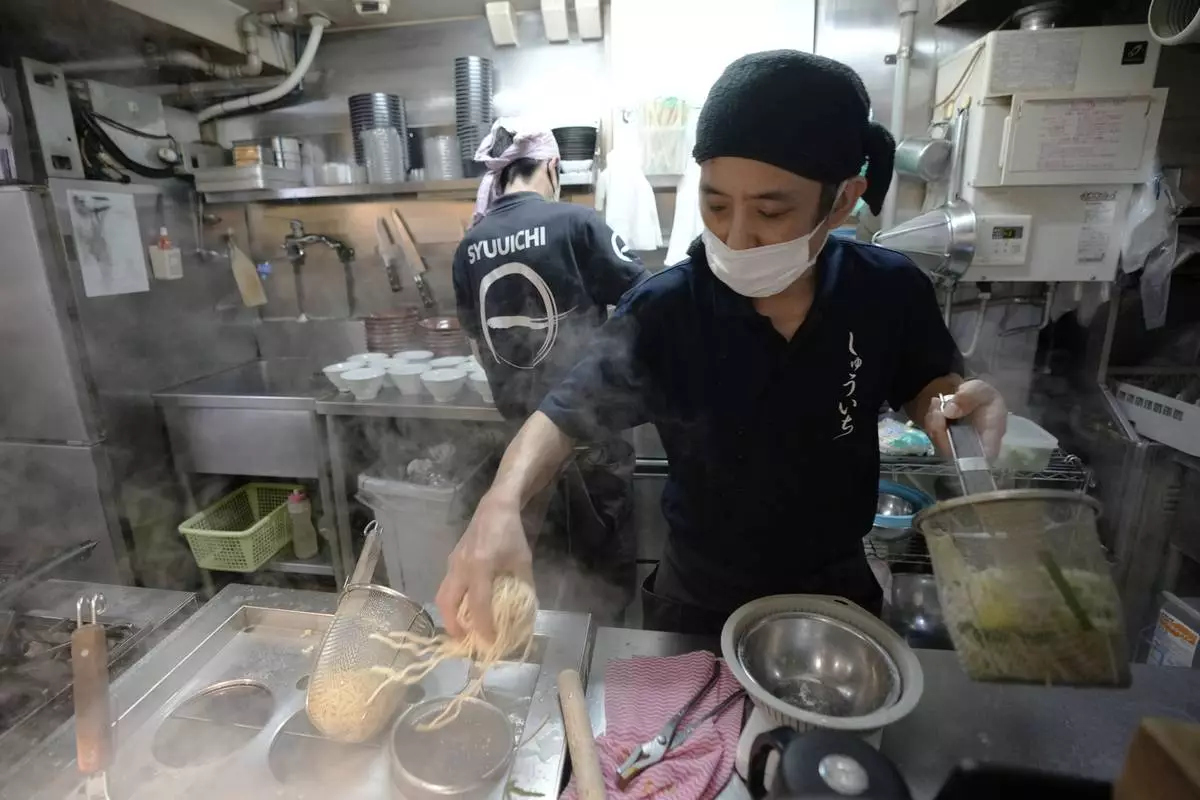
Chefs prepare noodles for participants of Tokyo Ramen Tours at Syuuichi, which means "once a week," featuring curry-flavored ramen, at Shibuya district on April 2, 2024, in Tokyo. (AP Photo/Eugene Hoshiko)
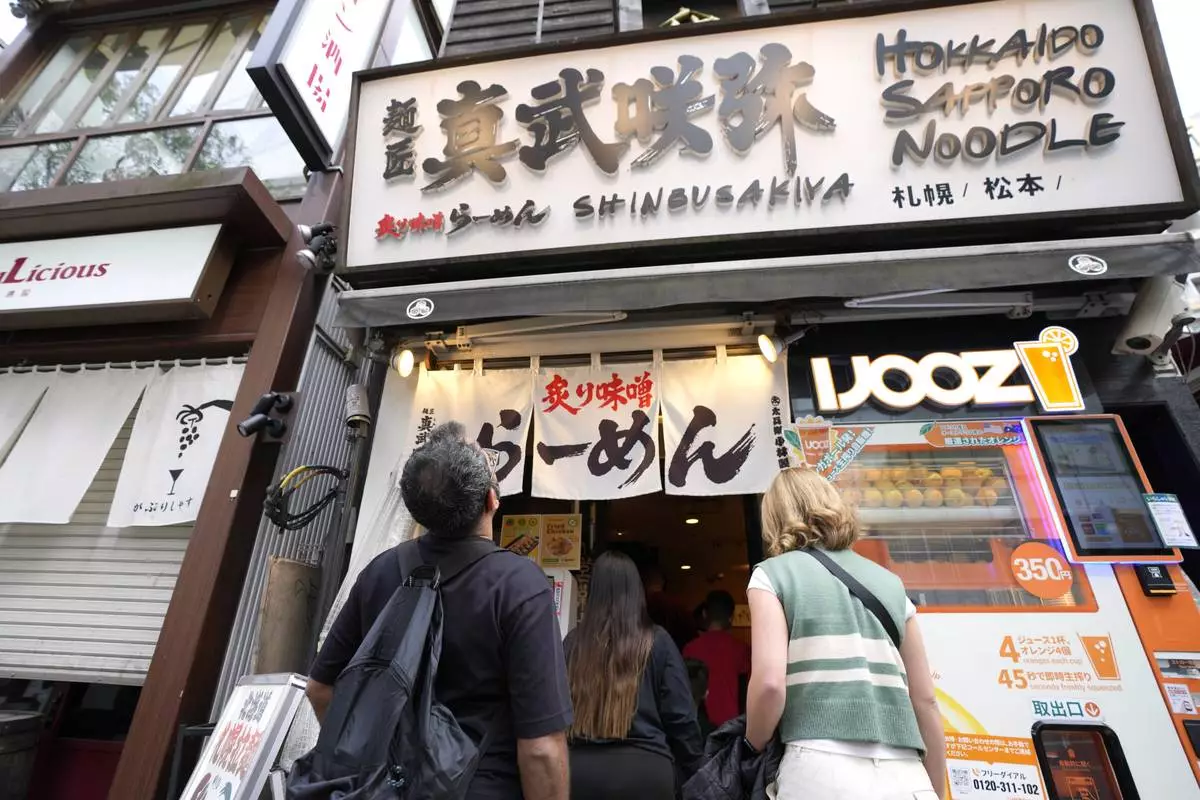
Participants of Tokyo Ramen Tours enter Shinbusakiya, a ramen shop which offers "Hokkaido classics," at Shibuya district on April 2, 2024, in Tokyo. (AP Photo/Eugene Hoshiko)
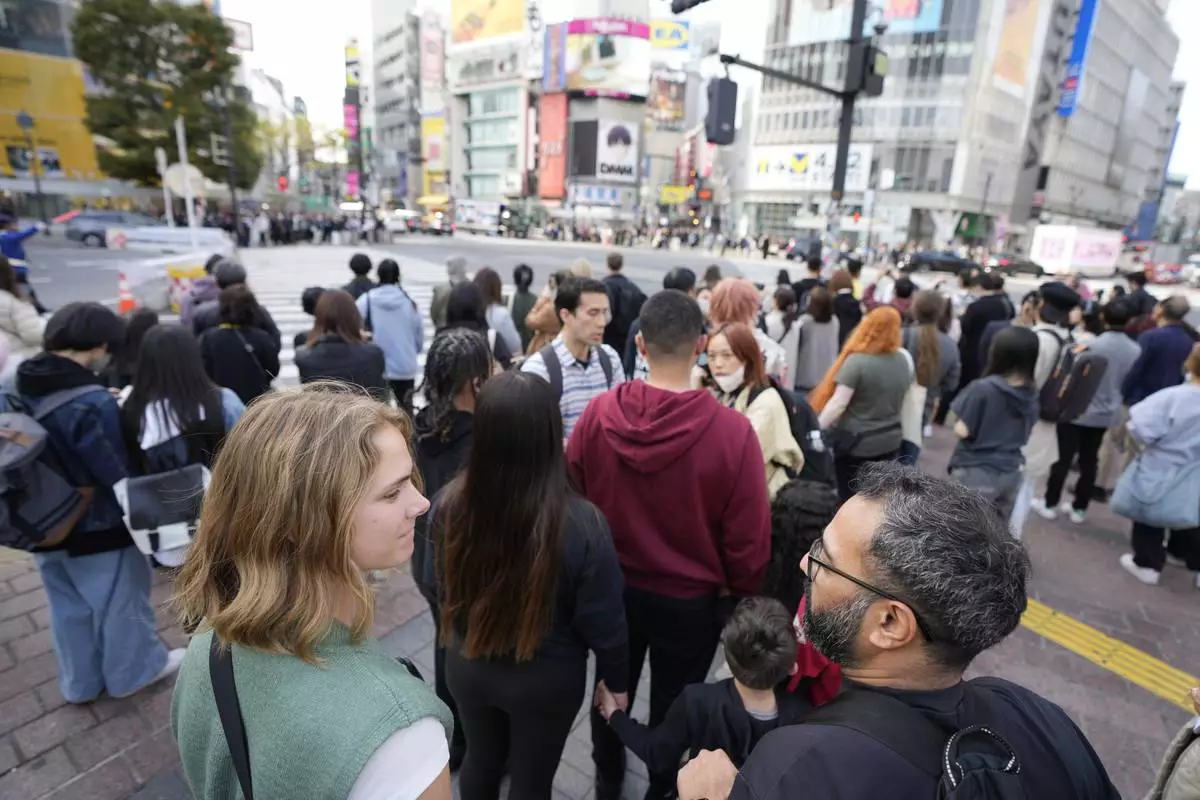
Frank Striegl, center, a guide of Tokyo Ramen Tours, leads several participants of a ramen tasting tour near Shibuya pedestrian crossing at Shibuya district on April 2, 2024, in Tokyo. (AP Photo/Eugene Hoshiko)
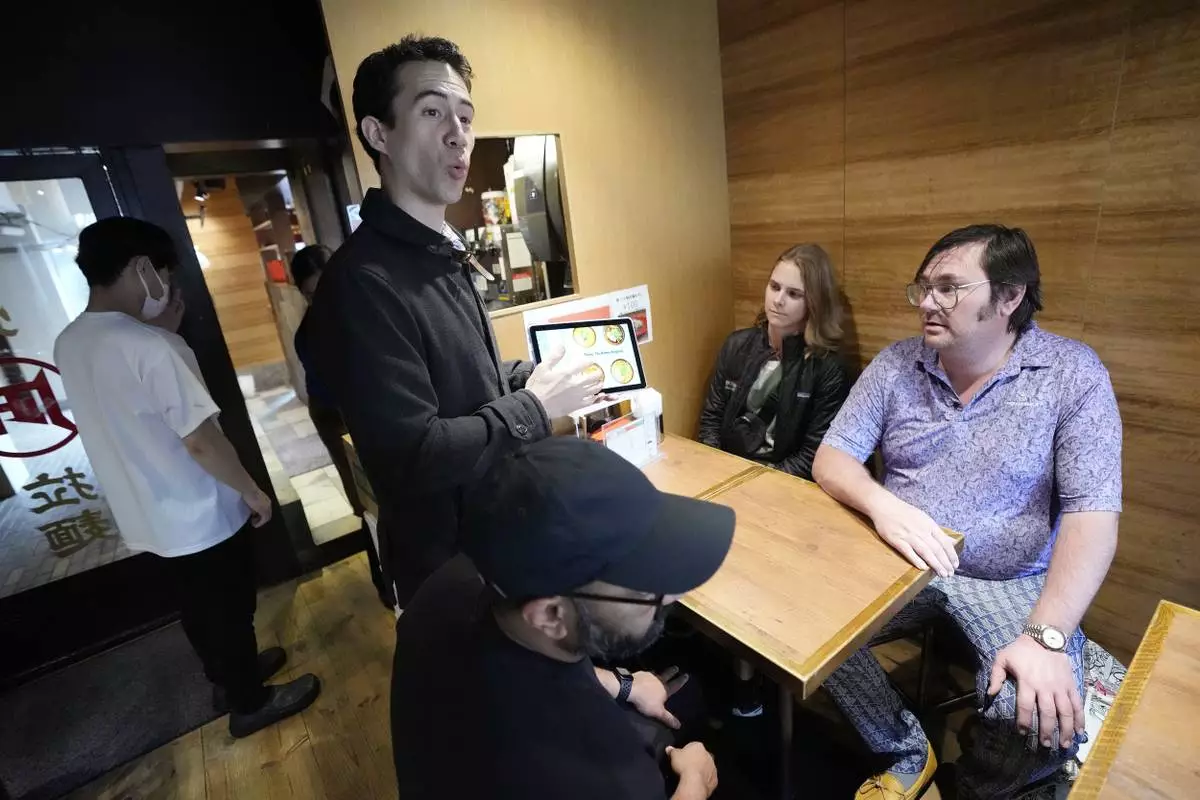
Frank Striegl, standing at center, a guide of Tokyo Ramen Tours, explains foreign participants of a ramen tasting tour at Nagi which offers "Fukuoka fusion," type ramen at Shibuya district on April 2, 2024, in Tokyo. (AP Photo/Eugene Hoshiko)
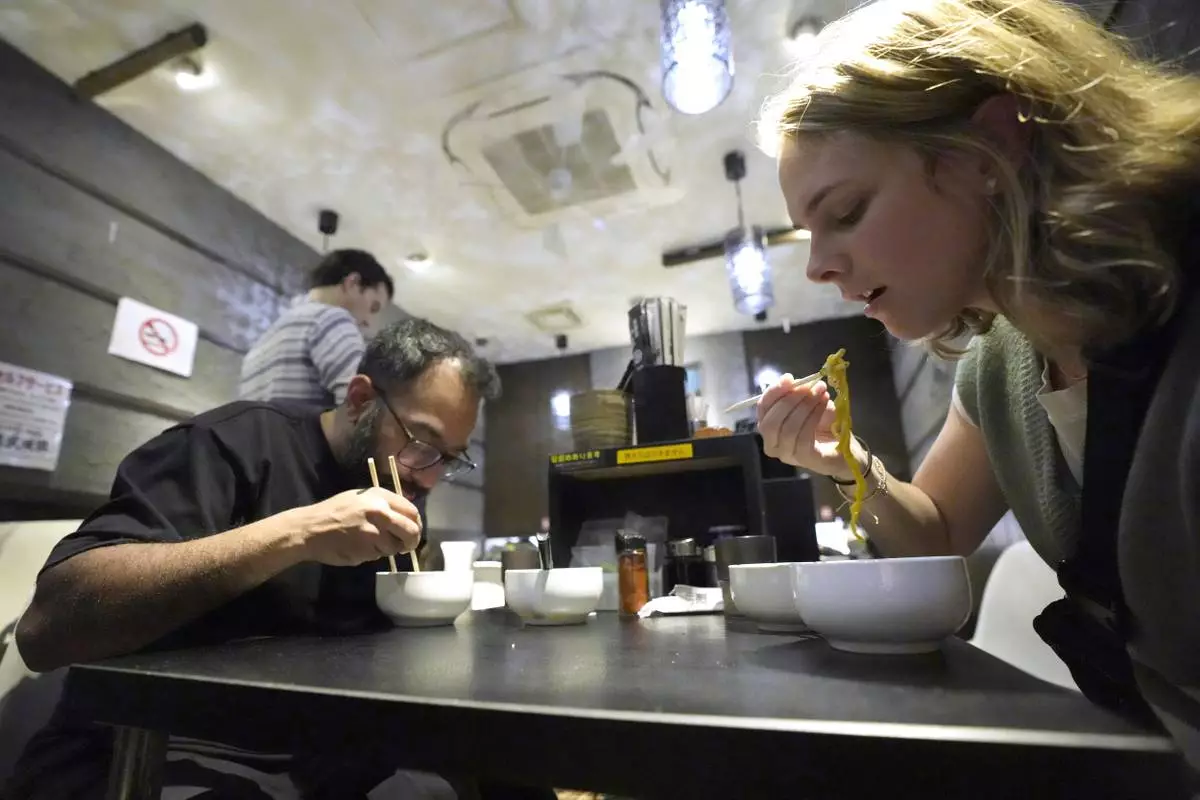
Participants eat the noodle at Shinbusakiya, a ramen shop which offers "Hokkaido classics," during Tokyo Ramen Tours at Shibuya district on April 2, 2024, in Tokyo. (AP Photo/Eugene Hoshiko)
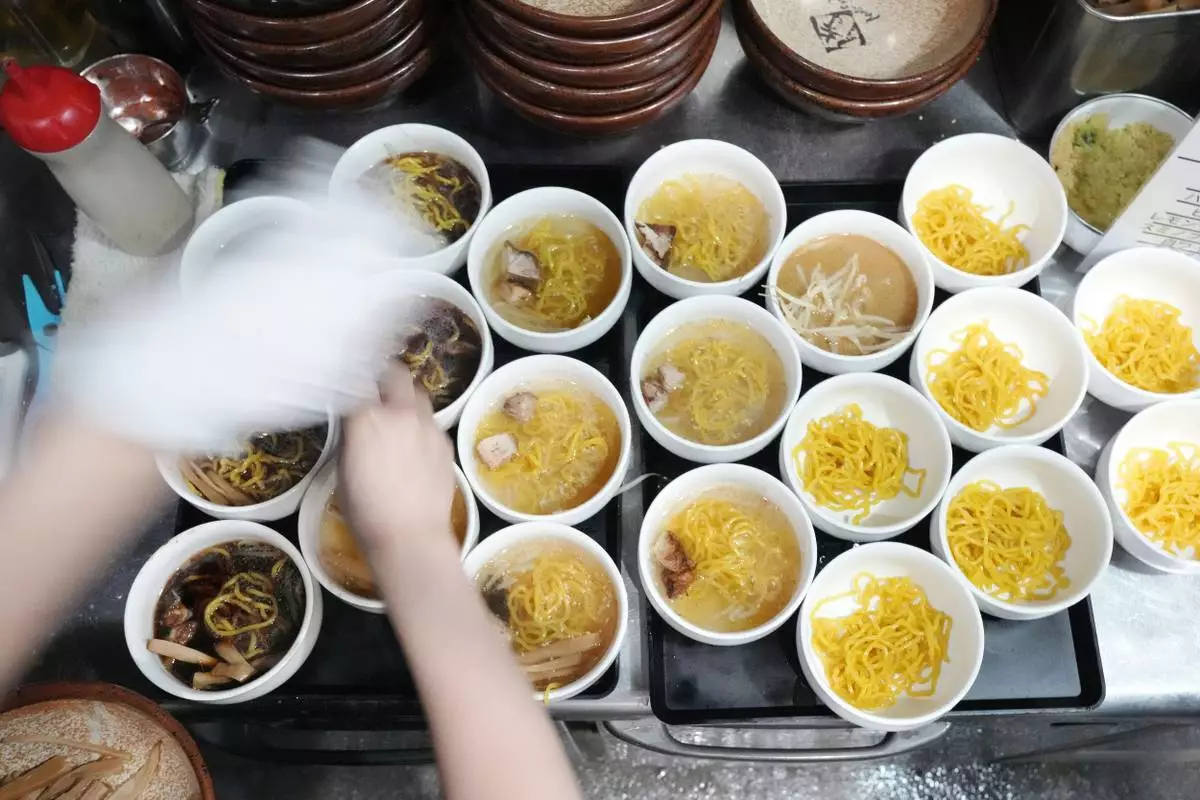
A staff member prepares small bowls of noodle for participants of Tokyo Ramen Tours at Shinbusakiya, a ramen shop which offers "Hokkaido classics," at Shibuya district on April 2, 2024, in Tokyo. (AP Photo/Eugene Hoshiko)

























